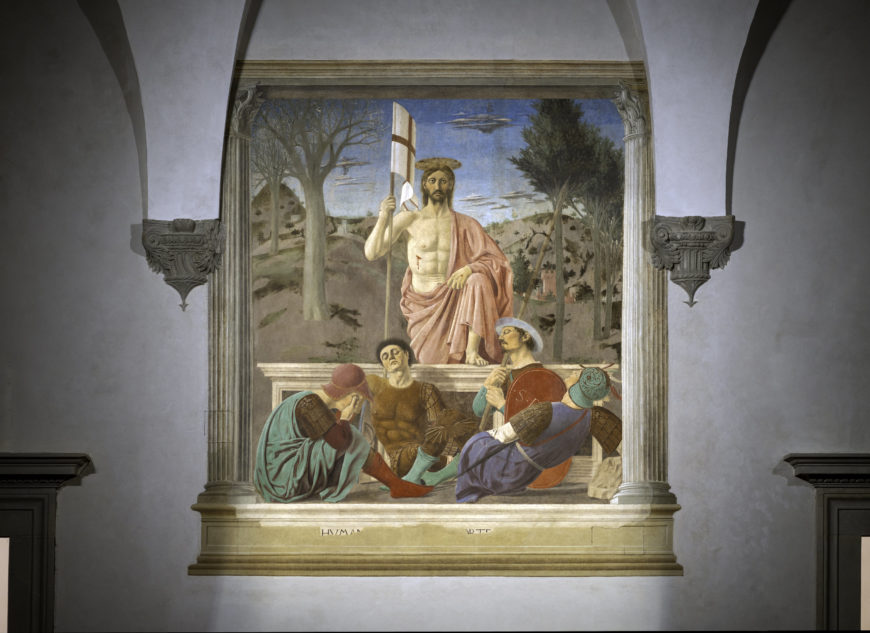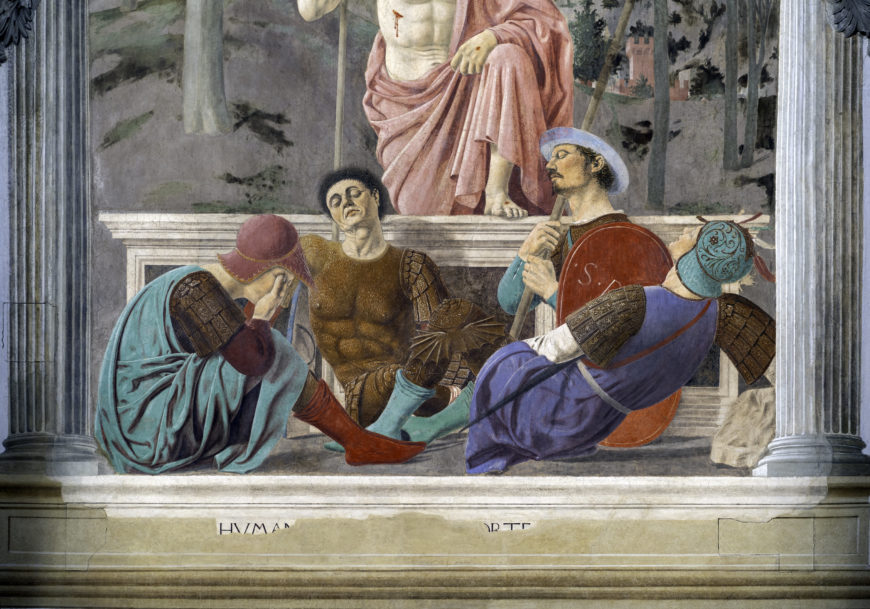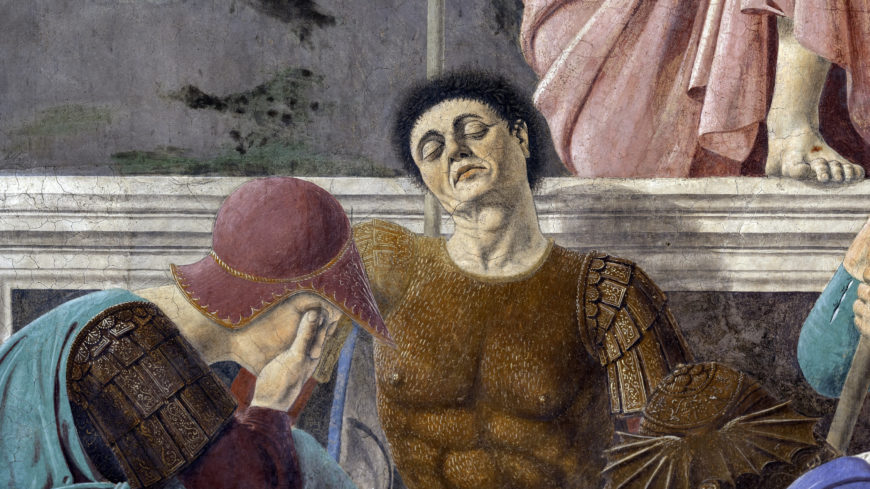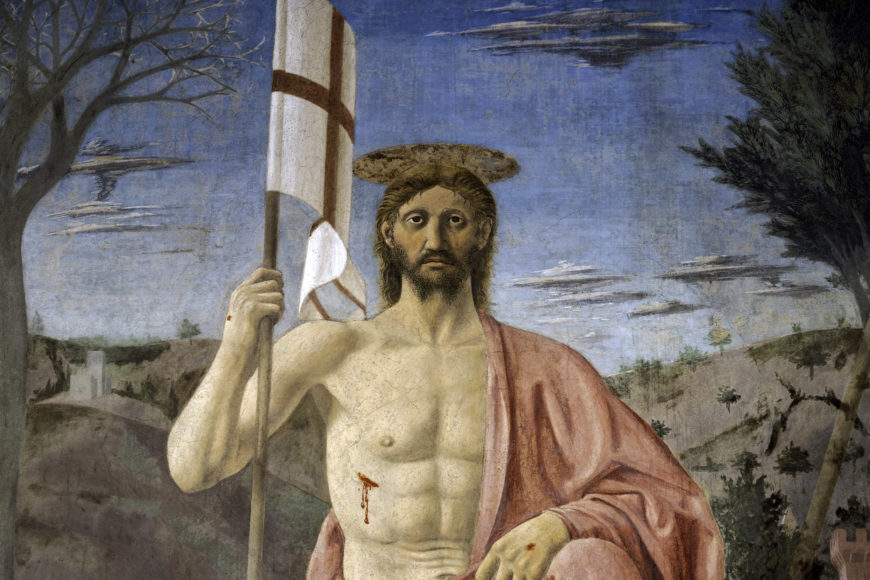Piero della Francesca, Resurrection

A relic of the holy sepulcher
Piero painted this fresco around 1463 in the civic hall of Sansepolcro, which had been occupied by the Florentines but was recently returned (the Italian city-states were often at war). The subject matter then—the triumphant Christ arising from his tomb the third day after his death—may be a reference to the triumph of the town itself, which was named after the Holy Sepulcher (Sansepolcro in Italian, and the Holy Sepulcher is the tomb that Christ was buried in). The presence of the large stone in the lower right hand corner of the fresco supports this, as it possibly represents the relic of the sepulcher (the burial place, in this case of Christ) putatively brought to Sansepolcro by the saints who founded the town, Arcano and Egidio.
An interest in more than naturalism
Unlike other paintings by Piero (The Flagellation for example), The Resurrection is less interesting iconologically than it is formally; that is, art historians are less concerned about what it might mean than what it actually looks like. Although The Resurrection is often depicted by having Christ emerge from a cave from which a boulder has been “rolled away,” Piero instead chose to show Jesus stepping out of a Roman sarcophagus. In the foreground of the painting, the Roman soldiers ordered to guard the tomb have all fallen asleep. The position of their bodies is quite interesting. The reclining soldier certainly could never actually maintain that pose while sleeping in real life, and his comrade next to him, holding the lance, doesn’t even have legs. These two details show that Piero was more concerned about achieving a pleasing composition than being true to life.
Also noteworthy is that, although we know that Piero was the author of a major treatise on perspective and was also a mathematician and geometer, the painting contains two vanishing points (the point at which all the lines of the painting should converge). On one hand, we see the faces of the soldiers from below, but on the other hand, the face of Christ is painted straight on. If the perspective were consistent throughout the painting, we would see all the faces from the same vantage point. Again, Piero has sacrificed realism for effect.
Geometry and mass
Piero has organized the figures so that an isosceles triangle is formed from the top of Christ’s head, through the soldiers, to the lower corners of the paintings. In addition, a tree is placed almost-symmetrically on either side of Jesus.

Also characteristic of Piero’s work is the mass of the bodies, an effect achieved in a variety of ways. Perhaps the most obvious is the stalwart pose of Christ, who appears anchored to the tomb by both his left leg and the flag in his right hand. At the same time, he seems to actively be using the flagpole and the hand on his knee to raise his other leg out of the tomb. The flexed muscles of his abdomen also emphasize the reality of Christ’s body, which is physically engaged despite the serenity of his face.[1]
- Christine Zappella, "Piero della Francesca, Resurrection," in Smarthistory, August 9, 2015, accessed February 28, 2023, https://smarthistory.org/piero-della-francesca-resurrection/. ↵



